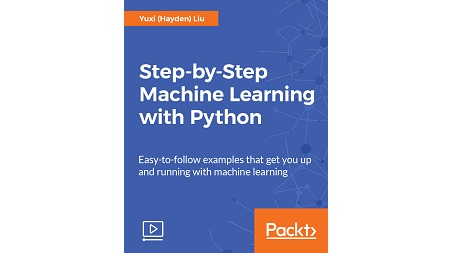
English | MP4 | AVC 1920×1080 | AAC 48KHz 2ch | 4h 56m | 948 MB
Easy-to-follow examples that get you up and running with machine learning
Put your Python skills to the test and enter the big world of data science to learn the most effective machine learning tools and techniques with this interesting guide
Data science and machine learning are some of the top buzzwords in the technical world today. The resurging interest in machine learning is due to the same factors that have made data mining and Bayesian analysis more popular than ever. This video is your entry point to machine learning. It starts with an introduction to machine learning and the Python language and shows you how to complete the necessary setup. Moving ahead, you will learn all the important concepts such as exploratory data analysis, data preprocessing, feature extraction, data visualization and clustering, classification, regression, and model performance evaluation. With the help of the various projects included, you will acquire the mechanics of several important machine learning algorithms, which will no longer seem obscure. Also, you will be guided step-by-step to build your own models from scratch. Toward the end, you will gather a broad picture of the machine learning ecosystem and master best practices for applying machine learning techniques. Throughout this course, you will learn to tackle data-driven problems and implement your solutions with the powerful yet simple Python language. Interesting and easy-to-follow examples—including news topic classification, spam email detection, online ad click-through prediction, and stock prices forecasts—will keep you glued to the screen till you reach your goal.
What You Will Learn
- Exploit the power of Python to handle data extraction, manipulation, and exploration techniques
- Use Python to visualize data spread across multiple dimensions and extract useful features
- Delve into the world of analytics to predict situations correctly
- Implement machine learning classification and regression algorithms from scratch in Python
- Be amazed to see algorithms in action
- Evaluate the performance of a machine learning model and optimize it
- Solve interesting, real-world problems using machine learning and Python as the journey unfolds
Table of Contents
01 The Course Overview
02 Introduction to Machine Learning
03 Installing Software and Setting Up
04 Understanding NLP
05 Touring Powerful NLP Libraries in Python
06 Getting the Newsgroups Data
07 Thinking about Features
08 Visualization
09 Data Preprocessing
10 Clustering
11 Topic Modeling
12 Getting Started with Classification
13 Exploring Naïve Bayes
14 The Mechanics of Naïve Bayes
15 The Naïve Bayes Implementation
16 Classifier Performance Evaluation
17 Model Tuning and cross-validation
18 Recap and Inverse Document Frequency
19 The Mechanics of SVM
20 The Implementations of SVM
21 The Kernels of SVM
22 Choosing Between the Linear and the RBF Kernel
23 News topic Classification with Support Vector Machine
24 Fetal State Classification with SVM
25 Brief Overview of Advertising Click-Through Prediction
26 Decision Tree Classifier
27 The Implementations of Decision Tree
28 Click-Through Prediction with Decision Tree
29 Random Forest – Feature Bagging of Decision Tree
30 One-Hot Encoding – Converting Categorical Features to Numerical
31 Logistic Regression Classifier
32 Click-Through Prediction with Logistic Regression by Gradient Descent
33 Feature Selection via Random Forest
34 Brief Overview of the Stock Market And Stock Price
35 Predicting Stock Price with Regression Algorithms
36 Data Acquisition and Feature Generation
37 Linear Regression
38 Decision Tree Regression
39 Support Vector Regression
40 Regression Performance Evaluation
41 Stock Price Prediction with Regression Algorithms
42 Best Practices in Data Preparation Stage
43 Best Practices in the Training Sets Generation Stage
44 Best Practices in the Model Training, Evaluation, and Selection Stage
45 Best Practices in the Deployment and Monitoring Stage
Resolve the captcha to access the links!